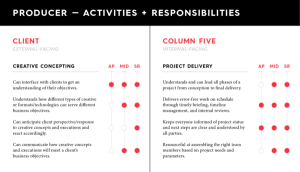By definition, digital transformation is the process of using digital technologies to create new—or modify existing—business processes, culture, and customer experiences to meet changing business and market requirements (Salesforce). While deploying new technologies and tools to achieve this is part of the equation, at its core, digital transformation means accelerating operational efficiency, and thus, delivering better solutions to customers.
It sounds like a no brainer, or maybe like something that all businesses are already embarking on, but like most things, digital transformation is more easily imagined than executed. While nearly 90% of businesses have adopted a digital-first business strategy or plan to do so, 45% of executives believe they don’t have the right technology in place to do so successfully (IDC). While leaders are rightfully trepidatious, there are a few questions they can ask themselves to set up their company for digital transformation success.
How Will Your IT Systems Work Together?
Workforce enablement—which in previous years, has only been considered a mid-ranking priority for technology leaders—has jumped to one of the top three business priorities, according to the 2020 Harvey Nash/KPMG CIO Survey. When IT systems and technologies play nicely together, it empowers employees with the information they need to get work done. Less headaches and improved productivity are good for any business. But understanding what needs to be done to facilitate this streamlined working environment is important before a digital transformation undertaking.
While best-of-breed solutions have been top of mind for years, we’re starting to see a shift to best-of-suite solutions, or those that work seamlessly together. An example of this is ServiceNow, which connects disparate technology to reduce the complexity of employees’ jobs through a modern digital workflow. Salesforce is another, connecting marketing, sales, commerce, service and IT teams to offer the best customer experience. Rather than investing in technologies that claim to be the ‘best of’ singularly, think about how they will work together and any roadblocks that might prevent solutions from jiving.
Is Access Management a Priority?
Digitally enabling your business has a lot of benefits, but it can also open up companies to new vulnerabilities, namely, with access and permissions. While threats do exist on the outside, mistakes with data handling or not properly protecting sensitive information from employees who don’t need it, poses a more prevalent and equally detrimental problem. One only needs to look at the race to the cloud over the last year. The pandemic has forced many businesses to accelerate certain IT initiatives to support a remote workforce and the cloud is an easy way to do this at scale. But with fast-tracking any solution, regardless of benefits, there are concerns that often get overlooked.
For example, what is your partner or vendor—in this case, cloud provider—doing to secure your data? Who, if anyone else, has access to it? What steps will be taken should it get in the wrong hands? These are all questions IT leaders should be asking with any digital transformation project, whether working with third-parties or building their own solutions. At the end of the day, mishandling of information or trade secrets— whether intentional or not—can harm your organization’s reputation and bottom line. Think through what security provisions are in place or where there are holes before going full speed ahead with your digital transformation endeavors.
Change is Hard: Is Your Workforce Ready?
Beyond technology tools and IT infrastructure, your business also needs to be ready for the cultural hurdles you’ll face when welcoming significant change. There’s always a learning curve, and smart businesses will ask themselves what those specific challenges may be and how to address them. The first step is air-tight communication to all staff about your business’ high-level digital transformation goals. From there, department heads and managers should be clear about how this may affect their teams’ day-to-day, and how they will be trained on the new systems and procedures. People are far more receptive to change when they know it’s coming.
After timelines and expectations are rolled out, make sure necessary training and onboarding activities are in place. Launches rarely go as smoothly as anticipated, so plan for IT outages, an uptick in Help Desk requests, and that it will take time for people to get comfortable with their new workflow. While the purpose of digital transformation is ultimately to make operations and business dealings easier, it won’t feel that way in the beginning, so be patient and transparent about what’s working and what’s not.
Microsoft CEO Satya Nadella recently said, as a result of COVID-19, “We’ve seen two years’ worth of digital transformation in two months.” Enterprise leaders have long talked about digital transformation, but the last year has proven that the time is now to start prioritizing the tools, workflows, and processes that will help them realize their digital transformation goals. Despite the digital shift becoming a mission-critical business need, it doesn’t mean organizations should jump in head-first. Be sure to ask—and most importantly, address—the questions that matter. Your digital transformation success hinges on it.
Business & Finance Articles on Business 2 Community
(57)
Report Post






